Wait, didn’t this trainer come out two years ago? And the answer to that is…sorta, but not exactly.
See, while the Flux 2 was announced in July 2018, it didn’t actually start shipping till late December 2018, and wasn’t really available until early 2019. It was around then that I got a unit, and it didn’t take long to determine it had legit road blocker issues, primarily with ERG mode and power accuracy horrifically off. So much so that I even put a warning up on my previous Flux 2 announcement posts saying straight up ‘Do not buy’.
Well, many moon phases later, last summer in Aug 2019, Tacx semi-quietly revamped the internals to a new version (oft called the Tacx Flux 2.1). This gave it more internal resistance power to handle all sorts of scenarios, but also set the stage for fixing the earlier accuracy issues I found. Except, those weren’t fixed yet. That firmware update didn’t finally release until April 2020. Toss in another month in peak-COVID here in the Netherlands, after UPS managed to destroy one, and we find ourselves here in July 2020 with a large number of rides under my belt.
Don’t worry, if you’ve got a Flux 2 of any sort, I’ll explain how exactly to identify which one you have. More on that later.

For now, with that already a way-too-long introduction out of the way, let’s get right into it.
The Flux S vs Flux 1 vs Flux 2.0:
Now, if you turn on the way-back machine, the original Flux was actually the first so-called “mid-range” direct drive trainer. After Wahoo came out with the KICKR and then Tacx came out with the NEO, Tacx popped out the Flux in 2016 at $899. At the time that was a massive deal, and it dominated the market that year. It ultimately led to Elite making the Direto the following year (substantially increasing performance, as well as a minor bump in accuracy), and then also led to Wahoo offering the KICKR CORE (which in turn mostly killed the original Flux’s appeal).
Anyway, in summer 2018 Tacx announced the Flux 2, they also announced the Flux S. The Flux S was basically just an original Flux at a lower price point (with a minor tweak to the case to allow for longer derailleur cages), but it enabled Tacx to undercut Wahoo and Elite on pricing. Meanwhile, the Flux 2 was designed to compete more on-spec with the Wahoo KICKR CORE.
So, to summarize up till this point:
Flux 1: First generation Flux with 10% grade simulation
Flux S: Basically a Flux 1, but with long derailleur cage support and some internal manufacturing tweaks
Flux 2: Far more powerful Flux with 16% grade simulation, increased accuracy claim
The main difference aside from the obvious 16% grade simulation was actually more substantial, specifically they increased the working area at low-speed but steep climbing. So with the original Flux 1, you’d top out at 225w if doing 15KPH. Whereas now on the Flux 2 you could do nearly 500w at 15KPH. That matters when going slow up climbs.
Ok, with me thus far? Good.
Fast forward 6 months later till December 2018 and Tacx finally started shipping the Flux 2. Add a few more months and as part of my review cycle I ran into accuracy issues in ERG mode that made it inaccurate at upwards of 10% off. Tacx was able to confirm these issues and set to work on them. Essentially, they had all this massive new braking/resistance power compared to a previous Flux, but it was no longer as accurate as the previous version.
So, Tacx quietly made more tweaks, working on what would debut in Summer/Fall 2019 as the Flux 2.1 (even though it was never really changed from a consumer standpoint). Specifically, the following tweaks were now in this new version:
Flux 2.1: Revamped internals to more accurately control the resistance, native 12mm thru-axle support without adapters, improved regulatory stuff related to voltages and global certifications
However, despite all that, it still didn’t solve the ERG accuracy issues entirely. Meaning, now it had the hardware to fix the issues, but they had to get the firmware to match it. That firmware update didn’t come out till April 2020.
And thus, you’re fully caught up on the Days of Our Lives: Tacx Flux Edition.
However, about now you’re trying to figure out what Tacx Flux 2 you might actually have. Well, handy that Tacx Support has a simple way to know. Grab your unit and look at the end adapters (or, the freehub itself). Both of these text bits are on the Flux 2.1, but not shown on the original Flux 2.
Unfortunately, as this is a complete revamp of the hardware internals, there’s no easy-button in terms of upgrades or swaps or anything like that from a Tacx Flux 2.0 to a Flux 2.1
The Basics:
First up is installing the leg. On the Flux series, the leg is secured by two bolts that affix it to the rest of the trainer. Unlike some trainers, the leg/trainer on the Flux isn’t foldable to save space during storage. However, it is beastly and fairly stable. This process will take you about 1-2 minutes:
For a size comparison, I took this photo at the start of this entire review process more than 2 years ago. It’s comparing against a NEO 2 (left), Flux S (center), and Flux 2 (right). Note that the NEO 1/2/2T are all identical in footprint/vertical size. Just like the Tacx Flux 1/S/2/2.1 are.
Like all trainers from Tacx, the Flux 2 doesn’t include a cassette. As such, you’ll need to pick one up. I typically buy Shimano Ultegra cassettes for my trainers (mostly for sound-testing consistency across videos), but I’ve also done a few SRAM ones and whatever else happens to be on sale from the bike shop. It generally doesn’t matter, except sometimes you’ll find some of the lower-end cassettes (like a Shimano 105) don’t quite sound as quiet as mid to higher-end ones. If you’ve got a SRAM AXS bike, you’ll also need to get a different freehub adapter from Tacx as well. But since you just spent a boatload of money on that bike, spending more money will feel natural to you.
With that cassette, you’ll need two tools. A lockring tool (or lockring + a wrench, in my case), and a chain whip. In this case, you need the chain whip since you can’t get a good grasp on the flywheel.
Once you’ve got the cassette on, simply put in place either the quick release skewer or thru-axle adapter (depending on your particular bike). The unit includes a thru-axle adapter set for 142x12mm & 148x12mm. Here’s the exact set of adapters that comes with the Flux 2.1:
And more easily simplified here. DS = Drive Side (right side), NDS Non-drive side (left side). You’ll simply put one of each into each side of the Flux 2.
Once that’s done you’ll want to go ahead and plug it in. One nice thing about the Flux series is that the power brick is built into the bike. Meaning you only need a single non-brick-like cable running from the trainer to the wall (and a standard cable at that). I can’t think of any other trainers that offer that (even the Tacx NEO series has a separate power brick).
Note that the Tacx Flux series does require power for resistance. So you can’t use it sans-power and get any resistance.
Once plugged in, on the side of the unit you’ll see three LED status lights illuminated. These are for general power, then one for ANT+ & Bluetooth Smart connectivity.
Once that’s done, go ahead and grab your bike, remove the rear wheel, and affix it to the trainer. While the Flux 2 doesn’t include (or require) a wheel block, I personally prefer to use one. I like that it makes my front wheel stay put. So I grabbed one out of the bin.
With everything set, we’ll talk about some of the basics of usage. App compatibility will be the next section, so this is more about things that aren’t specific to any one app. First, road feel.
Like I always say – for me personally, it’s hard to separate the fact that I’m riding indoors from outdoors. It’s still a trainer, and I’m still looking at a wall in front of me. My brain can only turn off so much of that. Still, much of the road-like feel is driven by the flywheel, and be it physical or virtual, flywheel sizes tend to be measured in weight. This impacts inertia and how it feels – primarily when you accelerate or otherwise change acceleration (such as briefly coasting).
The Flux 2 road-feel is…ok? It’s not great. But it’s not bad. It’s OK. Some 3-4 years ago it was pretty good for the price point, but with the KICKR CORE at the same basic price, the road feel there is far better (because ultimately, the KICKR CORE is simply a full KICKR from the year prior). You can see the flywheel below, it’s the big round silver disc and rotates while pedaling.
So what does it mean to be ‘OK’? Well, you’ll feel some of the momentum of an acceleration carry through, but not vastly so. It tends to feel like it tapers out a bit too soon compared to some of the higher end trainers. Typically momentum is driven by the flywheel weight. So a heavier flywheel weight responds with better momentum. If we look at the Flux 2, it’s got a flywheel weight of 7.6KG (but can simulate 32KG). Compare that to the KICKR Core at 5.44KG. The Elite Direto X sits at 4.2KG/9.2LBS, and I’d say is in the same basic road feel ballpark of the Flux 2.
To which you’re now asking – but wait, I thought it was all about weight? As the saying goes: It’s not the size, but how you use it. And ultimately, Wahoo uses their slightly smaller flywheel weight better, such that it feels better. Look, I don’t make the rules, but this one is easy.
With the Flux 2 being a smart trainer, it’ll change resistance automatically in a few different ways, primarily driven by different applications/methods. But most of this all boils down to two core methods:
ERG Mode: Setting a specific power level – i.e., 200w. In this mode, no matter what gearing you use, the trainer will simply stay at 200w (or whatever you set it to).
Simulation Mode: Simulating a specific outdoor grade – i.e., 8% incline. In this mode, it’s just like outdoors in that you can change your gearing to make it easier or harder. Wattage is not hard-set, only incline levels.
In the case of simulation (aka slope) mode, the Tacx Flux 2.1 can simulate from 0% to 16% incline – which is about as high as you’d need for almost anything in Zwift, especially if you use the default Zwift “Trainer Difficulty” setting at 50%, which halves the incline. I personally prefer to keep it on 100%, since frankly, there’s no point in spending more money for a higher-end trainer (or time on a climb) if you’re not going to simulate what the climb actually feels like.
(Some people racing prefer to keep the trainer difficulty at a lower value, because it makes it easier to keep the cadence much higher. It technically doesn’t impact how fast you go on Zwift, but in reality it does make it easier for most people on climbs to have a lower difficulty level. Plus, if it didn’t make it easier (and thus often faster), then racers wouldn’t set it lower. Duh. But…you do you.)
For comparison, the Direto X can simulate 18%, and the Wahoo KICKR CORE can simulate 16%. In other words, all of these trainers will more than enough cover your pain and suffering.
The second mode the trainer has is ERG mode. In that case, the company claims up to 2,000w of resistance at 40KPH. Although, realistically, you don’t care about that. I can only barely (maybe) break 1,000w for a second or two, and even most front of the non-pro pack cyclists aren’t going to top 1,800w. The pros would only be just a bit beyond that. Said differently: Peak numbers don’t matter. Stability matters.
Now, I dive into all the nuances of this later on in the accuracy section, specifically including my 30×30 test via TrainerRoad, though it doesn’t really matter what method you use as long as you’re looking at big shifts in wattage.
App Compatibility:
The Tacx Flux 2.1 follows the same app compatibility standards as previous Tacx products that are non-NEO series, and essentially follows the industry norms as you’d expect from a high-end trainer. As you probably know, apps like Zwift, TrainerRoad, SufferFest, Rouvy, Kinomap, and many more all support most of these industry standards, making it easy to use whatever app you’d like. If trainers or apps don’t support these standards, then it makes it far more difficult for you as the end user.
Thankfully, that’s not the case here. The Flux 2.1 transmits data on both ANT+ & Bluetooth Smart, as well as allowing interactive resistance control across both ANT+ & Bluetooth Smart. By applying resistance control apps can simulate climbs as well as set specific wattage targets.
The unit supports the following protocols and transmission standards:
ANT+ FE-C Control: This is for controlling the trainer via ANT+ from apps and head units (with cadence/power data). Read tons about it here.
ANT+ Power Meter Profile: This broadcasts as a standard ANT+ power meter, with cadence data
ANT+ Speed/Cadence Profile: This broadcasts your speed and cadence as a standard ANT+ Speed/Cadence combo sensor
Bluetooth Smart Power Meter Profile: This broadcasts as a standard BLE power meter, with cadence data
Bluetooth Smart Speed/Cadence Profile: This broadcasts your speed and cadence as a standard BLE combo Speed/Cadence sensor
Between all these standards you can basically connect to anything and everything you’d ever want to. Be it a bike computer or watch, or an app – it’ll be supported.
In the above, you’ll note there’s cadence data baked into the various streams. That’s handy if you’re connecting to Zwift on an Apple TV, due to Apple TV’s two concurrent Bluetooth Smart sensor limitation (plus the Apple TV remote). This means you can pair the trainer and get power/cadence/control, while also pairing up a heart rate strap.
For me, in my testing, I used Zwift and TrainerRoad as my two main apps (which are the two main apps I use personally). In the case of Zwift, I used it in regular riding mode (non-workout mode, aka SIM mode), whereas in the case of TrainerRoad I used it in a structured workout mode (ERG mode). I dig into the nuances of these both within the power accuracy section.
Starting with Zwift, you can see the Tacx Flux 2 listed as not just a controllable trainer, but also within the regular power meter and cadence section. You’ll want to pair it up as a controllable trainer (which will also pair it as a power meter):
You’ll see the trainer enumerated in a fairly similar manner on TrainerRoad as well:
Also, TrainerRoad’s tips page on using smart trainers in ERG mode:
And one of a number of workouts I did with the Flux 2.1:
When it comes to calibration, you can do so within certain 3rd party apps, or from the Tacx utility app (more on that in a second). While some trainers tend to be more susceptible to not calibrating, I haven’t seen that be the issue with the Flux 2.1. It seems pretty chill about it, and seems to handle longer periods of time without calibration with no issue.
Still, for the Flux 2.1 specifically, I’d recommend doing a calibration anytime the temperature changes significantly (meaning, if you leave it in a garage and one morning it’s really cold, and the next time you train it’s hot and steamy). Or, if you move it some long distance, it’s always a good practice.
As far as calibration goes, some apps support it in certain situations, however, not all. For example, TrainerRoad over Bluetooth Smart on an iPad doesn’t support it. And neither does Zwift on Apple TV over Bluetooth Smart. Whereas sometimes over ANT+ FE-C it’ll work/trigger. I did my calibrations using the Tacx app instead.
Speaking of that app, Tacx does have their own app which is used for updating the firmware and doing one-off calibrations. You can also connect to the trainer and perform basic tests with it. Upon connecting, you’ll see options at the left from the menu, including the ability to check/update firmware:
You can also go into a testing dashboard you’ll never use, as well as the ability to update the rider weight. This adds a component of flywheel realism above/beyond the baseline flywheel (called Simulated Flywheel by Tacx). Note that if using ANT+, Zwift will provide that information automatically to the trainer, but not via Bluetooth Smart. Also, you can toggle on/off the broadcasting of the ANT+ Speed/cadence profile.
And finally, you can do a spindown calibration. Quick and easy, and with that, we’ve seen all there is to see in the Tacx Utility app and beyond.
Power Accuracy Analysis:
As usual, I put the trainer up against a number of power meters to see how well it handled everything from resistance control accuracy, to speed of change, to any other weird quirks along the way. I outline how I do power meter & trainer accuracy testing here, in case you want to make your own comparisons.
In my case I used one primary bike setup as follows in three configurations:
Canyon Bike Setup #1: Favero Assioma Duo power pedals (dual-sided), Quarq DZero
Canyon Bike Setup #2: SRM X power pedals (dual-sided), Quarq DZero
Canyon Bike Setup #3: A different set of Favero Assioma Duo power pedals (dual-sided), Quarq DZero
This is all in addition to the trainer itself. Note that, because you remove the rear wheel, I can’t use something like a PowerTap hub to compare as well (which I would use in power meter testing normally).
In my case, I was looking to see how it reacted in two core apps: Zwift and TrainerRoad (Bluetooth Smart on Apple TV and iPad). The actual apps don’t typically much matter, but rather the use cases are different. In Zwift, you get variability by having the road incline change and by being able to instantly sprint. This reaction time and accuracy are both tested here. Whereas in TrainerRoad I’m looking at its ability to hold a specific wattage very precisely, and to then change wattages instantly in a repeatable way. There’s no better test of that than 30×30 repeats (30-seconds at a high resistance, followed by 30-seconds at an easy resistance).
There’s two ways to look at this. First is how quickly it responds to the commands of the application. So for that, we need to actually look at the overlay from TrainerRoad showing when it sent the command followed by when the Flux 2.1 achieved that level. Here’s the levels being sent (the blue blocks) by TrainerRoad (in this case via Bluetooth Smart on iPad) and how quickly the Flux 2.1 responded to it:
We’ll come back to that random spike prior to the first interval. But, in general it took about 4-6 seconds for it to stabilize from ~140w to ~428w, sometimes 4 seconds, sometimes a second or two longer. That’s a bit slower than I like to see. I find the sweet-spot around 1-3 seconds. Any faster and it feels unnatural, and any slower and you start to bleed into the purpose of shorter intervals.
In terms of stability of the power within an interval, that was tied to speed. On the first 3 intervals above I was in the smaller front chainring as recommended by TrainerRoad, and was in one of the two highest gears on the cassette (closest to the wheel). However, for intervals 4-6, I went towards the middle of the cassette, and you can see it wobbles a bit more in accuracy. Whereas the last two intervals I went back towards the top of the cassette and it cleaned up nicely. It had no effect though on how quickly it could get to that point.
Now, if you’re going from 150w to 250w or 300w, then honestly, it’ll be within 1-3 seconds. The more the wattage jump, the slower it’ll be. So while it seems slightly more sensitive to speed in ERG mode than other trainers, as long as you use the right gearing it’s perfectly fine in terms of stability (more on accuracy later).
As for the outright accuracy of that set, it’s about 10w lower than the Quarq and about 2-4w lower than the Favero Assioma pedals, at ~430w. That’s smack in the ballpark of overlapping accuracy ranges, especially when you consider drivetrain losses. I’d probably like to have seen the Quarq actually a couple watts lower.
However, before we move on – do note that random spike just before the first set. This is a ‘resistance surge’, and one of the three issues I’ve seen with this specific unit. In this case, the trainer did an uncommanded surge in resistance to roughly 350w+. This is hardly the first time this has happened. The surge lasts a few seconds and then returns to whatever it was doing prior.
So, let’s look at a few more sets (and surges).
In this next set from this past weekend’s Zwift L’Etape du Tour, you see that the Quarq DZero, Favero Assioma, and Tacx Flux were generally pretty darn close. The Quarq and Favero were higher than the Flux 2, but mostly in line with expected drive-train losses. Sometimes the Quarq was a hair higher than I’d like, but in the right ballpark. Here’s that data set:
However, what you also see are points where the purple line of the Flux 2 random spikes well above the rest. In fact, if I remove the smoothing I applied to the graph above, you’ll see it spikes to 2,000w:
And, when I remove that smoothing you see even more funky things. You’ll notice all the times the purple line touches the bottom axis of the graph. This is when the Flux 2 connectivity briefly drops out the power.
But wait, there’s more, each time it drops the power, it first punches me in the #$#@ by spiking my wattage to 500w. In some cases the resistance surges are real (and I feel them), and in some cases they’re phantom (and I don’t feel them in resistance change but it reports a spike to the app).
Still, if we set those moderately significant annoyances aside, and look purely at power accuracy, the units all follow each other pretty darn closely. Again, you’re looking at different measurement points on the bike, all with differing accuracy claims. But all of these are all playing bumble-bee soccer fairly well, on a course that includes flats, climbs, descents…the whole bit.
So, let’s look at another. This time my dumb idea to ride the Mont Ventoux course on Zwift earlier this week. I don’t know why I thought spending nearly 2 hours riding a trainer on a Monday afternoon would be a good idea, but I did it…for science. Here’s that data set:
Now, in general the Favero Assioma Duo pedals were slightly lower than I’d have preferred, so that’s a little bit quirky, but not substantially so. Or, perhaps the others were high. Welcome to my life.
Still, a mere one minute into it I get punched by the power surges. Then again two minutes later:
After that, it thankfully settled down in terms of surges.
However, about an hour later as I climbed my way up Ventoux I started getting dropouts of resistance. Note – that’s different than a connectivity dropout. In this case, the resistance AND connectivity disappeared. So basically I was instantly pedaling against air:
Now, this is a good point to basically say: I know this wasn’t a transient connection issue.
(Read: I know what I’m doing here)
How?
Well, let me count the ways:
These incidents occurred:
A) In two different locales (home and office)
B) Across four different OS platform types
Specifically seen across:
1) iPad TrainerRoad
2) Windows Zwift
3) Apple TV Zwift
4) Garmin FR935 connected watch
Oh, and in two different application modes:
1) ERG Mode
2) SIM Mode
On two different protocols:
1) ANT+ for Windows and the watch
2) Bluetooth Smart for the iOS/Apple TV
Oh, and did I mention everything was dual-recorded on each session too?
In other words, I’m really darn sure this isn’t a ‘your WiFi is interfering’ issue. Plus, WiFi interfering doesn’t cause the entire trainer to set the wattage to 0w or 500w or 2,000w.
Now, all that annoyance said, there’s two notable things:
A) Power accuracy (the point of this section) seems to be largely fine
B) I actually haven’t seen others with this same precise issue
Now, others may have other issues. But I’ve done a pretty good look at the Tacx Flux Owners Facebook group and I don’t see replications of my specific issues, which leads me to believe it’s plausible it’s a one-off unit. Though, that unit worked fine for the first month or so.
Atop that, while Tacx has seen some of these issues (notably the 2,000w spike), they thought they had that one resolved. So, as of this morning they’re back to digging into things. They agree though that this likely isn’t a connectivity issue by WiFi or such. So, I’ll circle up down the road.
Now remember, my entire point in going down the Tacx Flux 2 rabbit hole was to see if I could remove my ‘DO NOT BUY’ statement from the top of my previous Flux 2 post. So, while what I saw here in this section certainly isn’t good, it’s technically an upgrade from what I had written before. I guess. Kinda. Maybe?
(Note: All of the charts in these accuracy portions were created using the DCR Analyzer tool. It allows you to compare power meters/trainers, heart rate, cadence, speed/pace, GPS tracks, and plenty more. You can use it as well for your own gadget comparisons, more details here.)
Trainer Comparisons:
I’ve added the Flux 2 into the product comparison database. This allows you to compare it against other trainers I’ve reviewed. For the purposes of this particular table, I’ve compared it against the Elite Direto X, Wahoo KICKR CORE, and Saris H3. While the H3 is slightly higher in price, it’s also so often on sale for $800-$850USD, that one should at least check the price before making a purchase decision. You can also mix and match and create your own trainer comparison charts with just about any trainer on the market in the aforementioned/linked product database.
| Function/Feature | Tacx Flux 2 | Elite Direto X | Saris H3 | Wahoo Fitness KICKR CORE |
|---|---|---|---|---|
| Copyright DC Rainmaker - Updated November 19th, 2025 @ 3:55 pm New Window | ||||
| Price for trainer | $899 | $899 | $1,099 | $499 |
| Trainer Type | Direct Drive (no wheel) | Direct Drive (No Wheel) | Direct Drive (no wheel) | Direct Drive (No Wheel) |
| Available today (for sale) | YEs | Yes | Yes | Yes |
| Availability regions | Global | Global | Global | Global |
| Wired or Wireless data transmission/control | Wireless | Wireless | Wireless | Wireless |
| Power cord required | Yes | Yes (no control w/o) | Yes | Yes |
| Flywheel weight | 7.6kg (simulated 32.1kg) | 4.2KG/9.2LBS | 20lb/9kg | 12.0lbs/5.44kgs |
| Includes cassette | No | No | No | No | Resistance | Tacx Flux 2 | Elite Direto X | Saris H3 | Wahoo Fitness KICKR CORE |
| Can electronically control resistance (i.e. 200w) | Yes | Yes | Yes | Yes |
| Includes motor to drive speed (simulate downhill) | No | No | No | No |
| Maximum wattage capability | 2,000w @ 40KPH | 2,100w @ 40KPH / 3,250w @ 60KPH | 2,000w | 1800w |
| Maximum simulated hill incline | 16% | 18% | 20% | 16% | Features | Tacx Flux 2 | Elite Direto X | Saris H3 | Wahoo Fitness KICKR CORE |
| Ability to update unit firmware | Yes | Yes | Yes | Yes |
| Measures/Estimates Left/Right Power | No | 9EUR one-time fee | No | No |
| Can directionally steer trainer (left/right) | No | With steering accessory & compatible app | No | No |
| Can simulate road patterns/shaking (i.e. cobblestones) | No | No | No | No | Motion | Tacx Flux 2 | Elite Direto X | Saris H3 | Wahoo Fitness KICKR CORE |
| Whole-bike physical gradient simulation | No | No | No | With KICKR CLIMB accessory |
| Can rock/tilt side to side (significantly) | No | No | No | No | Accuracy | Tacx Flux 2 | Elite Direto X | Saris H3 | Wahoo Fitness KICKR CORE |
| Includes temperature compensation | Yes | N/A | Yes | Yes |
| Support rolldown procedure (for wheel based) | Yes | Yes | Yes | Yes |
| Supported accuracy level | +/-2.5% | +/- 1.5% | +/- 2% | +/- 2% | Trainer Control | Tacx Flux 2 | Elite Direto X | Saris H3 | Wahoo Fitness KICKR CORE |
| Allows 3rd party trainer control | Yes | Yes | Yes | Yes |
| Supports ANT+ FE-C (Trainer Control Standard) | Yes | Yes | Yes | YEs |
| Supports Bluetooth Smart FTMS (Trainer Control Standard) | Yes | Yes | Yes | YEs |
| WiFi or Ethernet | No | Data Broadcast | Tacx Flux 2 | Elite Direto X | Saris H3 | Wahoo Fitness KICKR CORE |
| Transmits power via ANT+ | Yes | Yes | Yes | Yes |
| Transmits power via Bluetooth Smart | Yes | Yes | Yes | Yes |
| Supports Multiple Concurrent Bluetooth connections | No, just one | No, just one | No, just one | Yes, 3 Concurrent |
| Transmits cadence data | Yes | Yes | Yes | Yes |
| Bridging or re-transmission | No | No | Purchase | Tacx Flux 2 | Elite Direto X | Saris H3 | Wahoo Fitness KICKR CORE |
| Amazon | Link | Link | Link | Link |
| Backcountry.com | Link | Link | ||
| Competitive Cyclist | Link | Link | Link | |
| REI | Link | Link | Link | DCRainmaker | Tacx Flux 2 | Elite Direto X | Saris H3 | Wahoo Fitness KICKR CORE |
| Review Link | Link | Link | Link | Link |
Don’t forget you can mix and match your own trainer product comparison tables using the database here.
Summary:
After two years since announcement, and some 18+ months of being on the market and people buying trainers – the big question is: Did Tacx fix what initially blocked me from recommending it? Yes. Tacx did fix the accuracy issues. Without question, those are within range of the specs. Some days there’s a tiny bit more disagreement than other days, but within the state specs of the combined units it’s relatively close on ERG and SIM mode. So, for the thing I set out to validate – that part is fine.
Unfortunately, instead I found other issues around power surges and connectivity drops. Tacx says they haven’t seen the issues that I saw, and a browsing of the Tacx Flux Facebook owners group doesn’t show these issues either. So hopefully it’s just a one-off. Tacx is trying to track down the issues.
And if those issues were just a one bad unit one off, then yeah – I’d be mostly happy with this unit from a technical standpoint. Maybe not for the price, but at the right price I would be. And I think that may be part of the overall issue. With the current $899USD pricing, the road feel and audible noise of the KICKR CORE is just a better option for the same price (plus multi-channel Bluetooth connections). Of course, the KICKR CORE hasn’t been issue free either. So, I’d say those two ‘pick your issues’ buckets cancel themselves out. There’s the Elite Direto X slightly cheaper, but good luck finding that in stock.
So, I guess 18 months on my answer has shifted from ‘No’ to ‘Maybe?’. I don’t know. If we assume that my issues are a one-off unit (given I don’t see much confirmation of these specific issues elsewhere), then the answer would be ‘If ya get a good deal on it, then sure’. In that situation, I don’t think anyone would be unhappy with the choice. Which isn’t to say I don’t like other Tacx trainer offerings. I use the Tacx NEO 2 as my main trainer at home when not testing stuff, and I recently reviewed the budget Tacx Flow, which is incredibly fantastic value for the money. But at present, I feel like the Flux 2 sits in no-man’s-land right now from a pricing to feature value standpoint.
With that, thanks for reading!
Found This Post Useful? Support The Site!
Hopefully you found this review/post useful. At the end of the day, I’m an athlete just like you looking for the most detail possible on a new purchase – so my review is written from the standpoint of how I used the device. The reviews generally take a lot of hours to put together, so it’s a fair bit of work (and labor of love). As you probably noticed by looking below, I also take time to answer all the questions posted in the comments – and there’s quite a bit of detail in there as well.
If you're shopping for the Tacx Flux 2 or any other accessory items, please consider using the affiliate links below! As an Amazon Associate I earn from qualifying purchases. It doesn’t cost you anything extra, but your purchases help support this website a lot.
And finally, here’s a handy list of trainer accessories that most folks getting a smart trainer for the first time might not have already:
And of course – you can always sign-up to be a DCR Supporter! That gets you an ad-free DCR, access to the DCR Shed Talkin' video series packed with behind the scenes tidbits...and it also makes you awesome. And being awesome is what it’s all about!
Thanks for reading! And as always, feel free to post comments or questions in the comments section below, I’ll be happy to try and answer them as quickly as possible. And lastly, if you felt this review was useful – I always appreciate feedback in the comments below. Thanks!




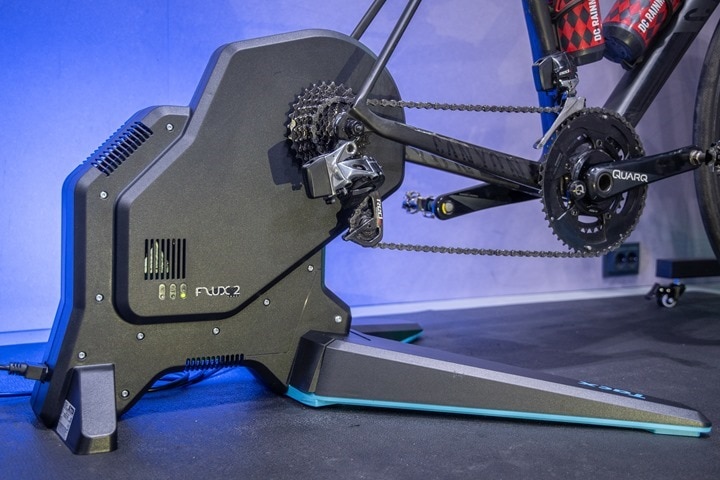
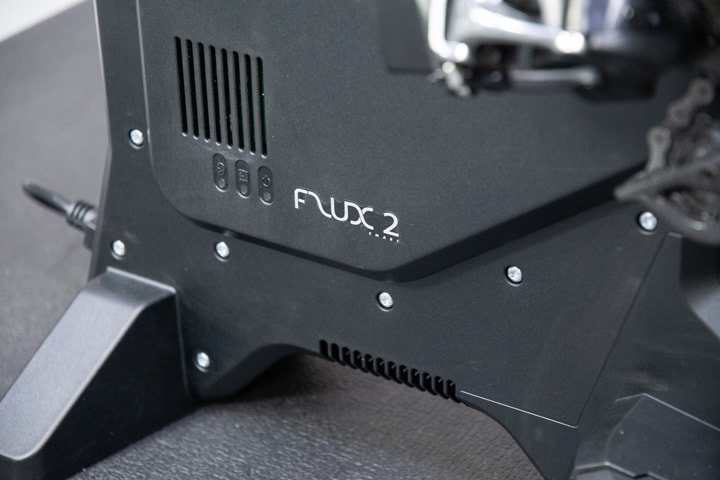

![clip_image002[6] clip_image002[6]](https://media.dcrainmaker.com/images/2020/07/clip_image0026_thumb.gif)

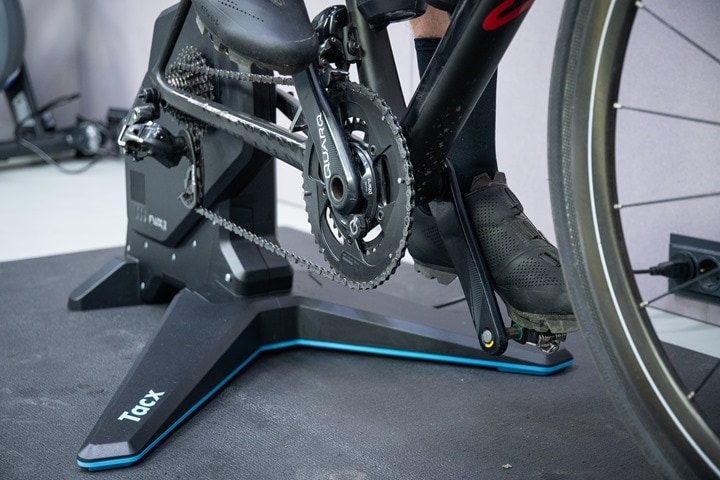
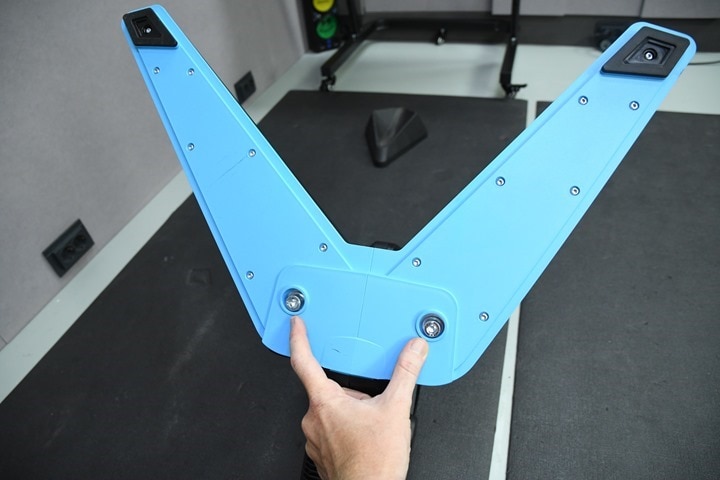
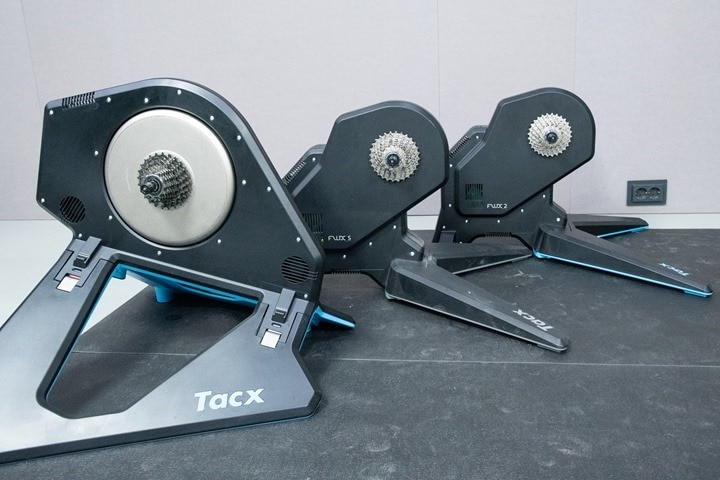
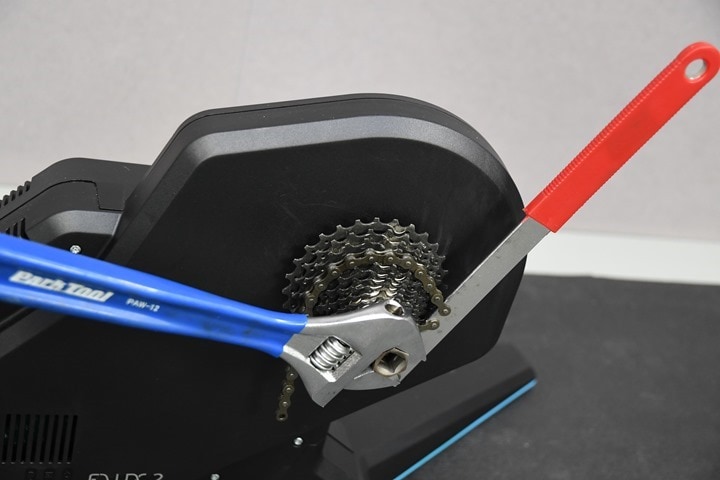
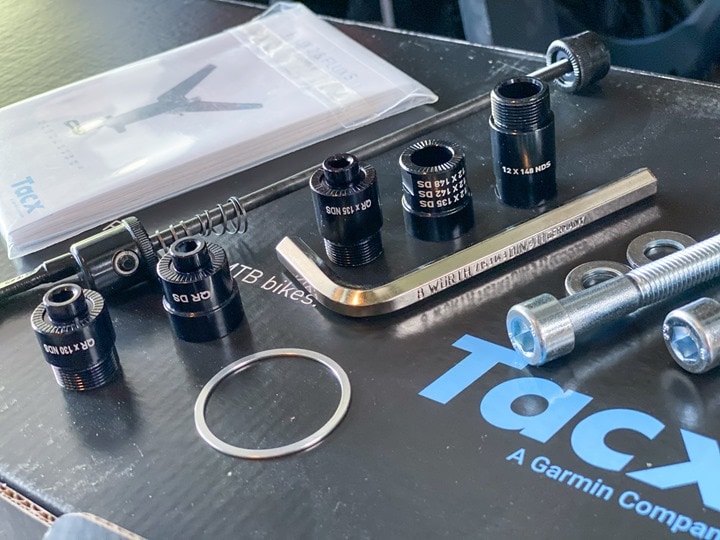
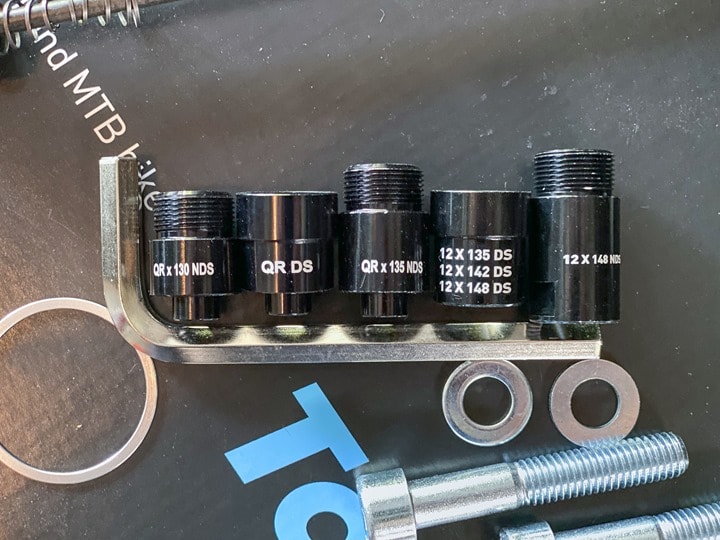
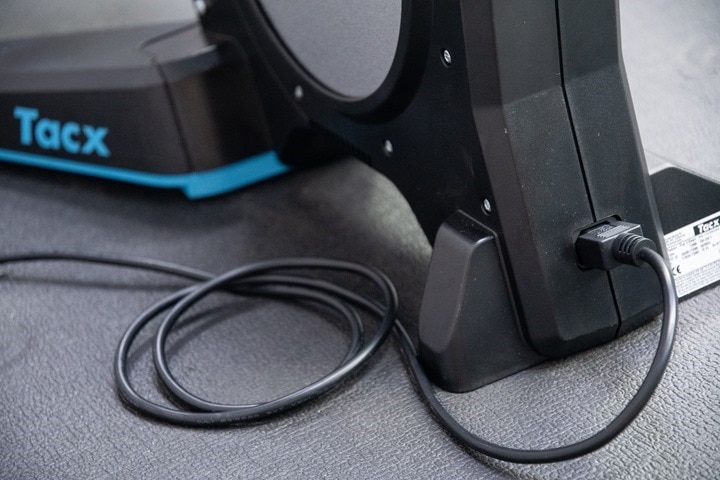
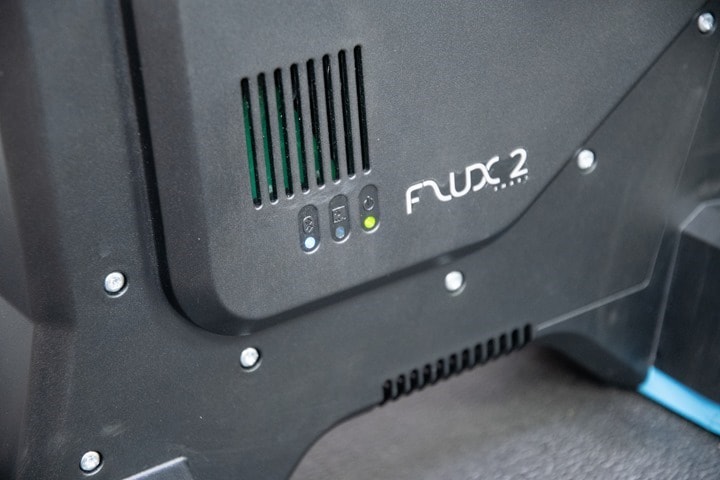
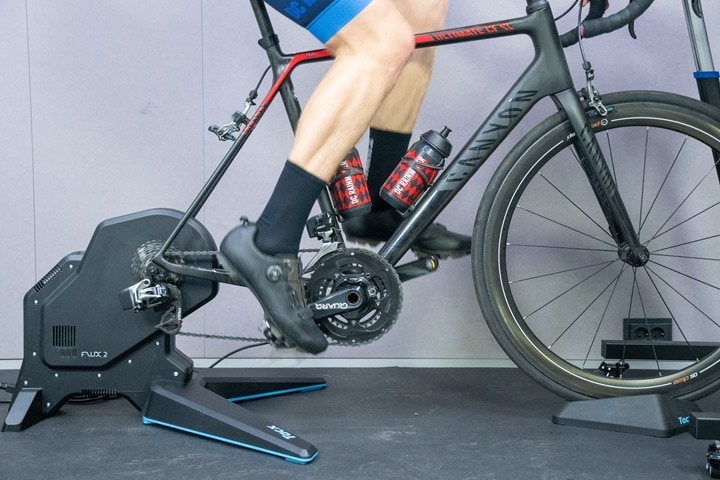
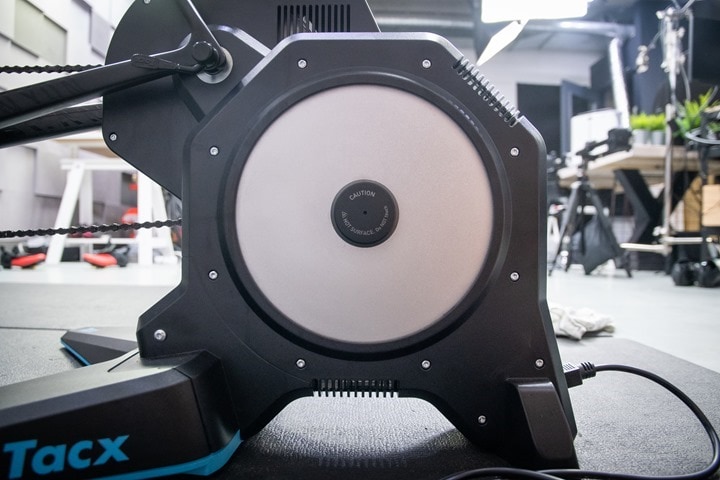
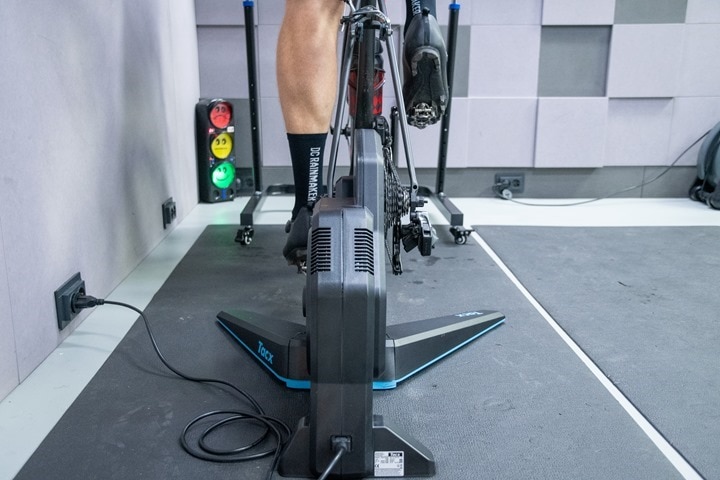
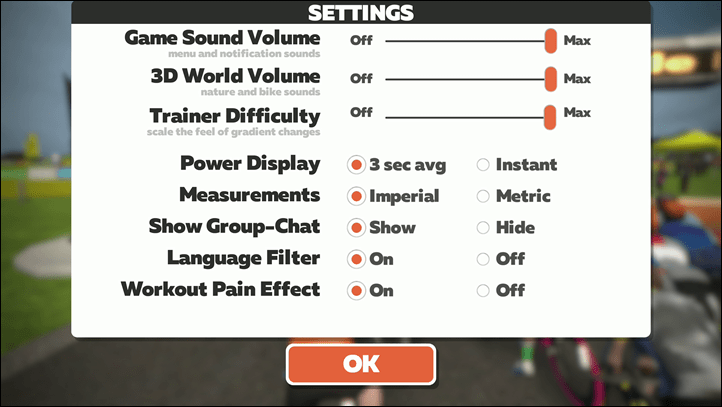

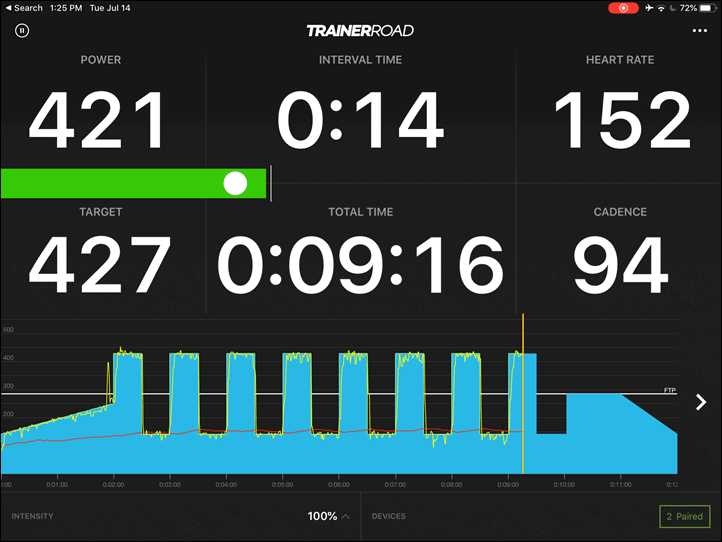
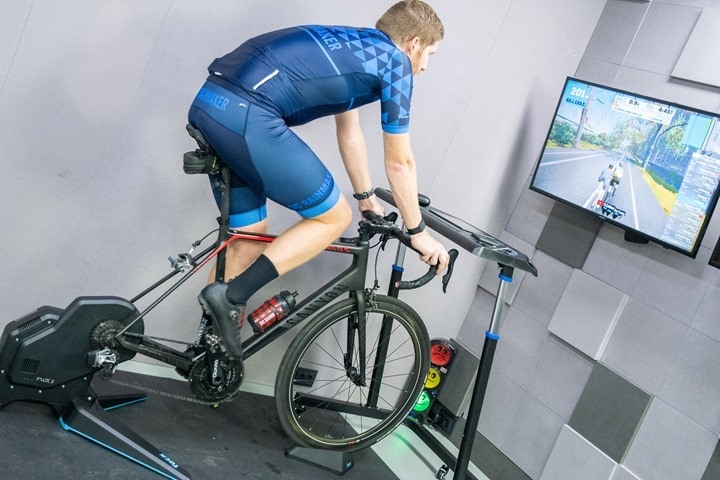
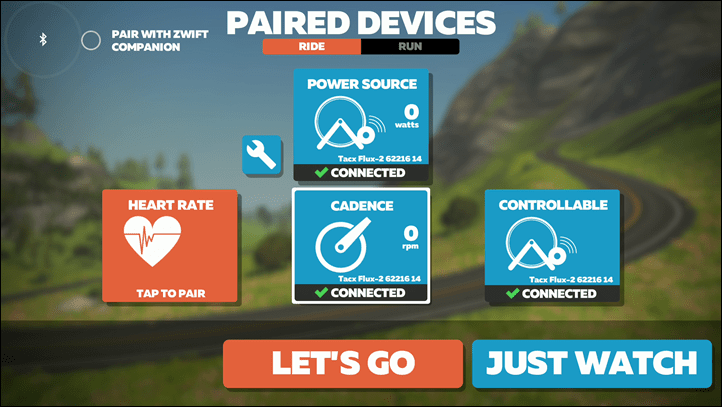
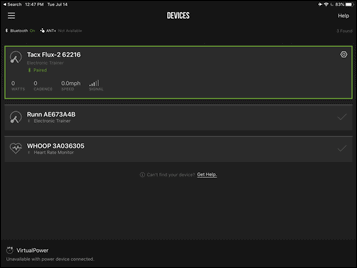
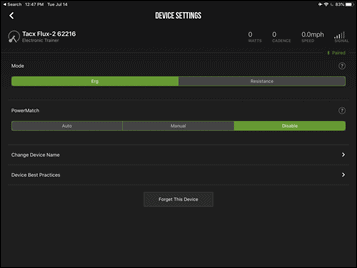
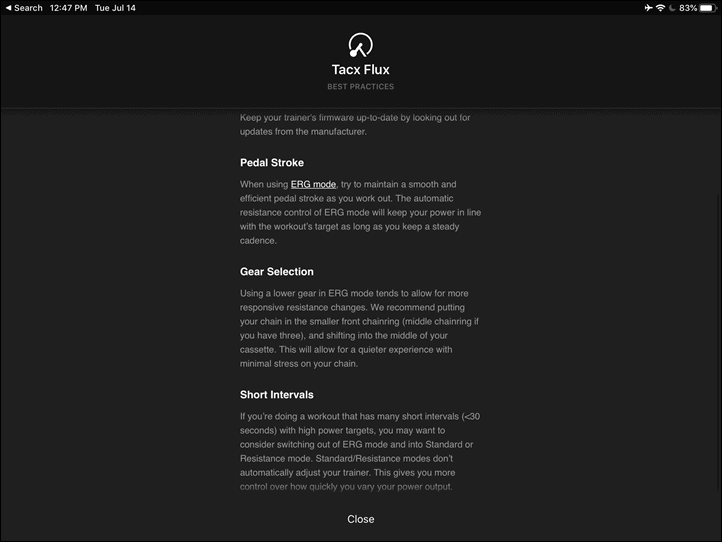
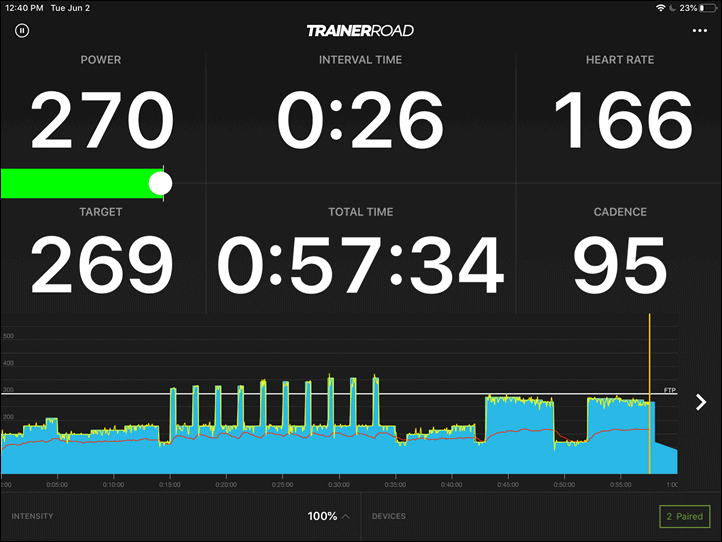
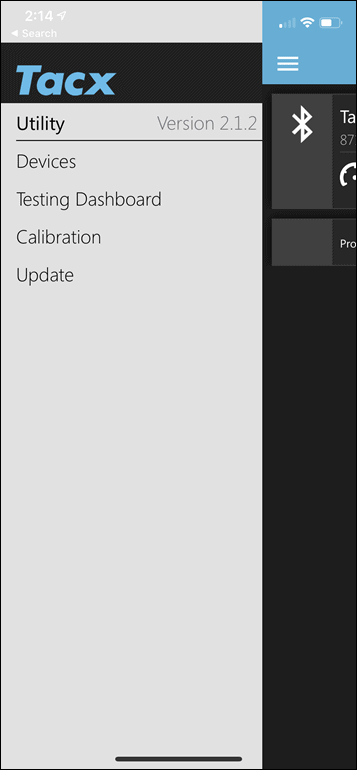
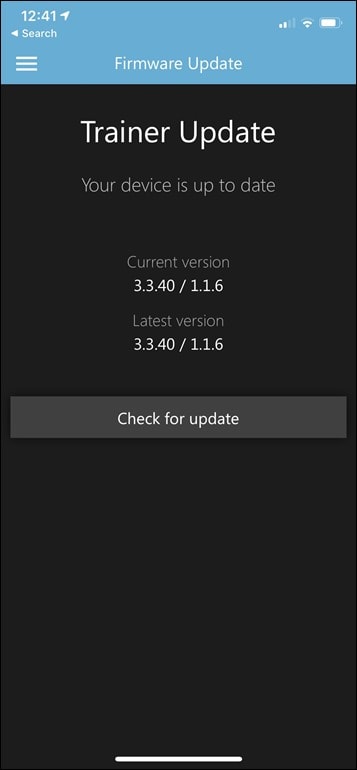


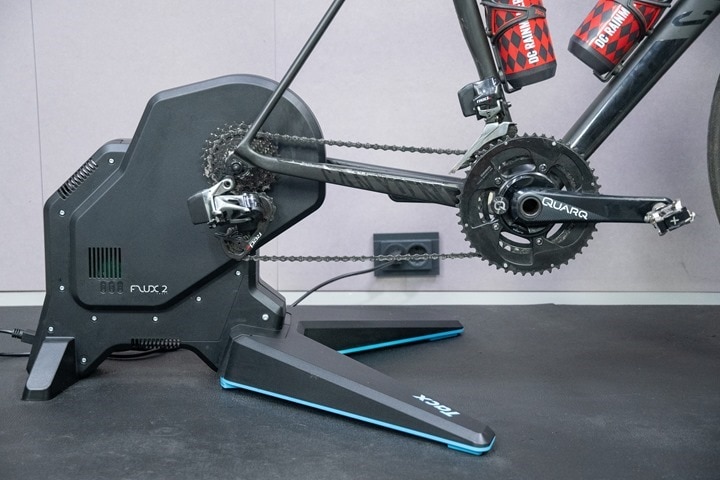










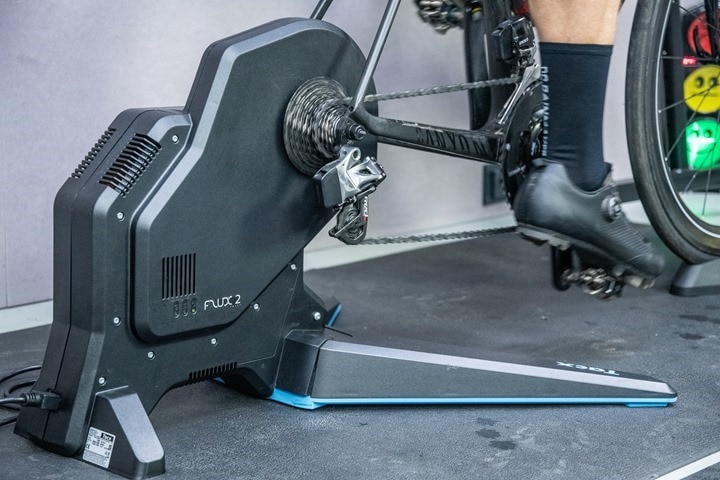
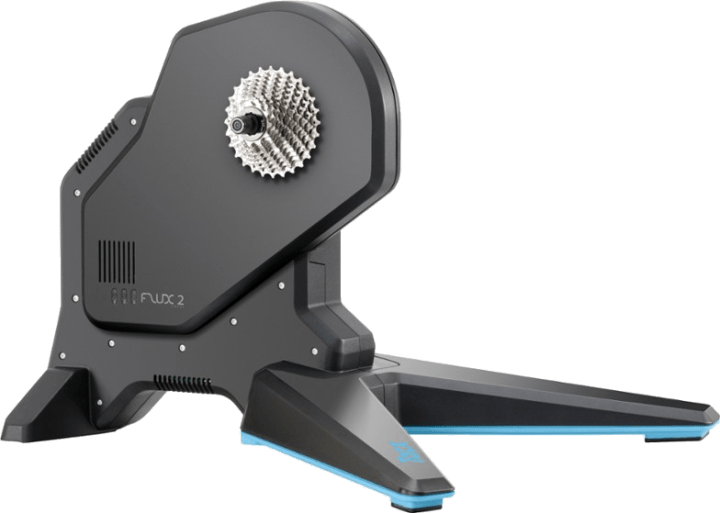
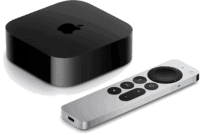



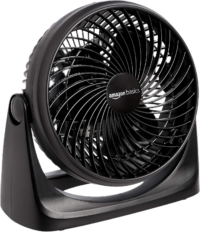

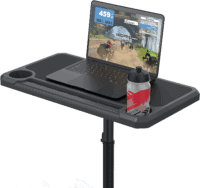
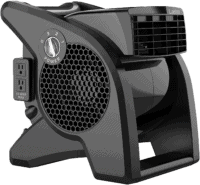
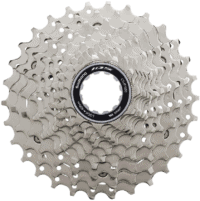
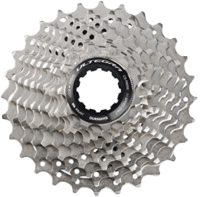
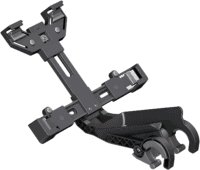





















So… What you’re telling me is that my <$400 Tacx Flow is – despite its relatively limited features – a more consistent performer? Eeek.
To be fair, the Flow can’t put out anywhere near the power, or accuracy, of the Flux. But, it didn’t ever drop the connection, or spike, or dropout. So – if this was a one-off, then it’s no competition. But if not…
Did Tacx send you the unit directly for testing? Is so, common sense would suggest they should have gone over it with a fine tooth comb, as the saying goes, to make sure there were zero issues. None. Nada. Your review leaves the potential buyer with valid concerns about whether your unit is truly one off or not. And the proverbial issue of ease and speed of replacement with Tacx. Plus ca change………….
Yes, they sent over a loaner unit.
I actually prefer when companies don’t try and game the system by sending a QA’d one. Generally speaking it’s pretty easy for me to tell. Most engineers/PR people/etc simply aren’t as good at re-applying stickers on products as the labor in Asia. :)
Still, I find it almost never matters. In the vast majority of cases, the products I (as a reviewer) get if early are almost universally worse than what consumers get. Firmware matures, manufacturing matures, etc… That said, whatever happened here could have happened to anyone.
There is a huge ‘buzz’ on the flux facebook group that this firmware update 1.1.6 is causing many issues (When upgrading). Between bringing the trainer to a halt on one hand and causing power to bounce all over the place on the other.
I’m wondering if this is a result of the firmware not suited for 2.0 fluxes…
in the UK, now Elite Drivo 1 is so cheap (and more importantly in stock), it’s cheaper than Direto X and Whaoo/TACX mid rangers. I bought one after my order for other trainers keep getting cancelled through lockdown. To my surprised it is quite abit quieter than the direto 1 it replaces. My question for Ray is: For others who are about to order a trainer, is it still worth considering Drivo 1, given it’s now 525GBP in the UK? (I’m dont have much complain so far, but i am interested in your opinion since you clearly have much more exposure ot different trainers than me.)
From Ray’s review, the Drivo 1 sounds an extremely solid trainer: link to dcrainmaker.com
Tbh, from that review, it sounds flawless. Not bad for a 2016 product! Makes you wonder how Tacx is making such a hash of the Flux 2. Non-folding? Bug-ridden? No thanks.
The Drivo was a good review for it’s time. The two main things that would put it further ‘down’ the list these days are:
A) A bit slower ERG mode responsiveness (barely though, about 4 seconds)
B) Just louder
Still, ERG mode stability was very very good.
I’ve just been reading the comments on the Drivo 2 review :-o . E.g. link to dcrainmaker.com — someone describing, late last year, the exact same problem you (Ray) have been having with the Flux 2.
And there’s post after post about very slow (10+ s) responses to changes in erg target power, even though you/Ray found excellent performance there (3s). All very concerning/confusing.
Elite don’t need seem to have the functionality of updating firmware via their app, leaving such problems unsolved.
Elite released an upgrade app last fall, and the Drivo 1 was slated to be the 2nd trainer to receive an update: link to dcrainmaker.com
Interesting. Poking Google/forums suggest no update yet for either Drivo.
FWIW, the comments on the Drivo 1 review are largely positive. It seems only Drivo 2 users report issues. Maybe more Drivo 2s were sold.
Ray, where did the “working area” charts come from? Are they available for any other trainers?
They’re from Tacx. They were part of a presentation from two years ago, but they sent me over refreshed copies that were a bit cleaner than the originals. The working area of the Flux 2 and Flux 2.1 is identical.
I wish I had them for other trainers. Tacx has always had them, and sometimes publishes variants to their site. I think they’re awesome, and really help illustrate the power of this trainer (despite the connectivity issues).
But like you probably implied, without having them for other trainers, it’s hard to understand unless you run up against specific power/speed/weight break points to point to. GPLAMA and I at one point talked about trying to quantify this for all trainers in a central repository…then we stopped drinking that night, woke up the next morning, and realized that’d be a miserable way to spend our lives. :)
Thanks for the reply ?.
I do actually remember you and GPL discussing this. While creating the maps yourselves would be a drag (pardon the pun), a post discussing this would be invaluable for people like me, who’ve never used a smart trainer but am thinking about one for the winter in case gyms (here in the UK) don’t reopen/close again in the winter, and I can’t access my beloved Wattbikes. I don’t want to spend £500-1,000 on something I won’t want to continue using.
(UK consumer law is such that, once you’ve unboxed and used a product, you can’t return it for a refund unless it’s faulty, unlike, I believe, in the US.)
In fact maybe someone passing by can help me out, because I currently don’t understand: when a trainer is specced as “1,500W at 40kph”, what is that speed referring to?? Is it actually the rpm of the drive spindle (what the cassette is mounted on) as if it was in a 700c wheel and was rolling down a road?
If so, why isn’t the big ring recommended for erg mode use?
Faster gearing and flywheel speed makes it harder for the resistance unit to make power/resistance adjustments. This means slower reaction to changes up or down when compared to slower flywheel speed.
Additionally, ERG use in faster gears tends to result more bouncy power data, which isn’t necessarily bad or the reason, but it is usually the case.
Faster gearing also leads to more noise, which is another consideration.
Many people prefer setting gearing to try and get a “feel” that is more like their outside use. That can be a range of gearing choices depending on many factors.
As for the exact speed, it’s literally the *only* thing the trainer industry has managed to agree upon when it comes to accuracy claims. Probably, because it’s a claim that makes them look good. The higher the speed, the easier it is to be accurate.
This is slightly underwhelming – too bad.
Are there any other mid-range-trainers supposed to get a successor in the foreseeable future? Otherwise it seems the KICKR CORE will stay on the throne for some more time.
I still find it quite rediculous that you buy a quite expensive piece of equipment and you actually have to also have a subscription app with it to work. I have bought a Bushido smart soon after it was released and the Tacx pc software, but that is not really supported anymore. And the apps (any) monthly subscription fee is very very expensive. Imho.
Yes any Garmin ant FCE will do the trick, but my edge 800 is not written off yet. And my new fenix 6x Pro can not do FCE.
There are free apps though – Golden Cheetah is one, and other smaller developers too.
Golden cheetah is the only one that eats gpx of old rides as far as I know. That one is ok though not the most user friendly.
I’d look at it the other way round – I don’t think you subscribe to a service like Zwift so you can use your trainer; you buy a trainer so you can use a service like Zwift. That’s what smart trainers are intended for, a gateway to your preferred subscription-based app(s). I think the apps/services are the driver, not the other way round.
Hi
Will it take a campagnolo cassette?
You will need to get the Campy cassette (because the stock one is not compatible):
T2805.51 CAMPAGNOLO (Direct Drive Body)
Forgive my ignorance on this…So does this mean I have to buy a ‘special’ campy cassette?
I have several spares kicking around from spare wheels etc, I can’t just take one of these off a wheel and put it onto the trainer then?
You can use and Campy cassette you have. But you must buy the freehub body I listed above, and then install that on the trainer, in order to fit your Campy cassette.
The stock freehub body on the trainer is compatible with Shimano and SRAM SRAM cassettes only.
Ah!
Understand now.
Thank you :)
The T2805.51 does not fit my Tacx Flux 2 purchased 2 days ago. Even the support folks at Tacx are not sanguine about exactly which Campy free hub is needed. I’m going to try the T2875.51.
You seem to be missing two NDS thru access adaptor’s for 135 and 142
Great review.
Now more importantly, where is your review of the new garmin 10.10 firmware for the Fenix 6 :p
Was your testing done with the latest firmware 1.1.6. I have experienced issue with this firmware using TR in ERG mode in relation to spikey power. TR graph looks like a non ERG mode work out would.
Reading the Tacx Facebook group and Garmin forum others had experienced the same issue and suggested rolling back firmware which I have since done and this has seemed to resolve the issue. Is there any rumblings of a newer firmware for the Flux 2/2.1?
Hey DC, what do you use to film your videos again? Is it the GoPro Hero 8 or a DSLR? Thanks.
About 95% of the shots here are on a Panasonic GH5 mirrorless camera (link to amzn.to), and the remaining 5% on a Nikon D500 DSLR (link to amzn.to).
For the most part I rarely use GoPro’s indoors, except to get weird camera angles like from the ceiling or super wide establishing shots of the entire studio.
For the Zwift shots, those are recorded off an Apple TV 4K, using an Elgato game capture system straight to SD card (link to amzn.to), and then for the TrainerRoad bits I just use iOS’s native screen recording capability.
Thanks DC!!
I’ve been seeing resistance dropout all throughout last winter/spring on Flux Smart and Flux S trainers. Tacx says they don’t know what’s causing it and stated their R&D department is looking into it. Haven’t heard from them in a couple of months.
I’ve got the TCX and FIT files if anyone is interested in analyzing them.
Hi Ray,
As a 2.0 owner, it does concern me that Tacx has set out to fix the issues of the unit by releasing a new revised version leaving the previous one behind without consideration. Do Tacx/Garmin have any plans to support 2.0 owners in some way?
I’ve also experienced the 5s or more ERG mode delays which are a total pain when Zwift racing and a ‘perceived’ power inaccuracy compared to the Flux 1 it replaced under warranty (another story). I’m also scared to update firmware after a number of horror stories reported on the FB group.
Overall the whole purchase(s) and living with the Flux has been a very sour experience and when the time comes, it will be hard not to look to other brands.
Very good. But I think is very expensive. I prefer Saris. I had a H3 and H2, the noise was normal for me. H2, is a little loud in high speed, but is not louder. And the quality of data an power on ERG and SIM is very very good. Is very easy maintain a target power. And has a quick response. Greetings from Colombia
I’ve just purchased the 2 on the basis of improvements and I’m getting fluctuations in watts. I’ve submitted files to Garmin for I investigation and I hope they can find a solution. My power has dropped significantly from my I genius by about 20% and is about 10% down on my Stages crank power meter.
If this doesn’t get resolved I will need to invest in the Neo.
Any tips of the Flux 2 using Zwift and FulGaz as my apps.
I’ve had a flux S and flux 2 both go back to tacx/garmin due to the plastic fan disc thats attached to the flywheel warping and rubbing on the housing as well as consistent dropouts on both units just like these, glad I ended up with a NEO2T !
Thanks for the review, i own a Flux 2.1 for almost a year now, rode as much as 10000 km on Zwift with it,.
Reading your review makes a lot of things clearer. I’ve use the Flux 2.1 i.c.w a 4iii precision 105 single sided pm. What you mentioned about the resistance fluctuating, i though was due to use of the companion app and the apple tv 4k. By cutting out the hrm, just using the two BLT channels and shutting off the ant+ broadcast on the trainer, still leaves me loosing power and connection sometimes. Today for instance, went for Quatsch Quest and on the Alpe, i just didn’t get the resistance to do the watts i normally do, for short moments on and off Zwift is the only platform i use btw. The unit itself makes some sqeeky noises at the start but after 10 minutes it’s totally silent. Hands on a fine trainer, but with a mind of it’s own. In other words, the scenario you descibred is not an isolated incident. Thanks for letting me know i’m not alone
I have the same resistance issues with zwift. It seemed to improve when I bought a wahoo cadence and used that instead of the virtual cadene coming from the Flux 2 (2.0 that is) but then after the TdF update from zwift it came back. Don’t really know if it’s related at all. However, I have never experienced these problems with sufferfest or when controlling the trainer from my elemnt bolt dong a structured workout, only with zwift.
Thanks for this very informative post, and one that has I think steered me away from the Flux 2. I can’t go to Wahoo as I curse the smaller things I already have from them and simply cannot support the continued lack of quality that I have experienced.
All this aside, the big question and possible learning (would appreciate your insights here) are how compatible these direct drive trainers are for multiple riders. My wife and I share the same older wheel-on trainer that needs to be replaced. The issues that I see here are our weight difference, and more importantly, the fact that my bike is disk braked (wider) than hers meaning that changing the bikes is not just a quick release skewer activity. It looks like there are spacers required, or is that just for a thru-axle configuration? Then there is a calibration that is needed with each switch. Am I thinking this is a bigger problem than it really is or should I stick with a wheel-on trainer since buying two direct drives might land me in ddep water with the wife (looking for cycling exersize and not swimming)?
Peter
My wife and I are faced with a not-too-dissimilar conundrum. We too have ageing Tacx wheel-on turbo trainers (easily 7+ years old) – our issue is that we have different/incompatible group sets on our road bikes, so we’d be faced with swapping out the cassette and adapters too!
Seriously eyeing up the option of a full-blown training bike setup, rather than a direct-drive unit
The cost of dedicated training bikes still hurt. Unless you are getting one bike per member it looks to me like there is a headache in setup of ride position. I really value my bike setup for my physique and keeping my knees from hurting. Then there is the saddle and getting one that works for both parties (I just switched to ISM and have to say that they might have this solved IMO).
With the direct drive trainers, the auto calibration capability of the Neo is so appealing, but the price paid for the Neo is crazy. From the sounds of some of the other trainers (non-Tacx) the ability to calibrate is fairly simple through Zwift, when they allow Zwift to do the calibration spin down. It would be nice to have a Zwift option that prompts if you want to perform the calibration before you start the ride. That would help my wife whom tends not to be technically minded. Something I need to send Zwift as a suggestion.
The whole mounting approach for these direct drive trainers feels like it is broken and in need of a standard. With the wheel on it was a simple clamp that worked well for all the bikes I know of. A dedicated quick release like skewer that had all the adapters integrated? You would buy the skewer that is appropriate to your bikes and then it mounts to the trainer. The through axel based bikes are the most difficult to accommodate on a quick switch but I have to think that this too could be solved. Or maybe I just need the first posting answered with a statement hat this is not actually a problem.
Is 20% off the flux 2 worth it over the kickr core at full price?
Would recommend the kickr core over the flux 2. I have both and the kickr core with erg power smoothing and the multiple BLE connections helps.
TACX flux 2 or Saris H3?
The Flux I had discarded due to the quality issues so was not as interested, but perhaps the Garmin takeover would resolve this issue.
I had put an order in for the Saris H3 on the basis of its metrics, accuracy, and apparent better quality. The H3 is compared to the Neo 2T making it a higher end unit. Then came the bad news that they are backed up in orders and I would likely not see anything until December for delivery.
With the bad news came a new factor for consideration. Apparently Garmin is going to announce a new or improved Flux 2 on October 10th. So I am now waiting to see what they announce and may be taking a chance on the Flux.
Hi, where did you hear about this new Flux rumor?
At this juncture we’ve seen all the new trainer announcements we’re going to see for 2020.
Oh, and as for the Flux 2 vs H3, easily H3.
(Also, and just to further clarify why there’s no chance of anything happening on October 10th – that’d be a Saturday. No company announces anything on a Saturday, let alone Garmin. Garmin will almost always announce things on a Tues/Weds/Thurs, but usually Tues/Weds. Always at 7AM US Eastern time, unless there’s a specific tradeshow occurring – and even that, they just announce the day before at 7AM. But nonetheless, there’s really no more new trainers coming this year from any of the majors. They’re all focused on trying to fulfill existing trainer demand.)
Was the version from the link below of Tacx Flux 2 Smart and the Tacx Flux S Smart released earlier? The note from the Garmin site states that they are not available until early 2021.
Flux 2 Smart: link to buy.garmin.com
It appears, for the Flux 2, that accuracy claim is now for 2.5% and incline of 16%. Not sure if the 7.6Kg flywheel is heavier. Any other differences I am not knowledgeable enough about.
The Flux S appears to have a slightly heavier flywheel (7.0Kg).
I did manage to locate a Saris H3 though so am going that way as I need a trainer, and I don’t want to wait to find out if this latest Flux 2 solves the problems of the past.
Hi,
Just bought a Flux 2 and the firmware version is at 3.3.45 and 1.1.6
When I run TacX Utility to check for updates it offers to « upgrade » to 3.3.40/1.1.6 … relative to the version number this is rather a downgrade …
What do you advise me to do ?
Thanks,
Fred.
Hello. What do tou think of my picture in relation to the consistancy of the power as shown? I think it is wobbling too much. It’s a tacx flux 2, ipad Zwift
It’d honestly depend on how stable your pedal stroke is/etc… I can’t quite see scale here, so it’s hard to know of the bumps are +/- 5w, or +/- 10w. Given teh timeline tops out at 244w, my guess is these are pretty small, and thus pretty normal variances.
Ray, thanks for all you do! Greatly appreciate your reviews and forums for detailed feedback.
Been troubleshooting Tacx Flux S dropout issues for almost a year now. Garmin has been extremely cooperative (if not always fast) but the problems persist. The original Flux S power matches up great with the latest version Garmin Vector 3 pedals. But the dropouts make the Flux S useless for Zwift racing.
Garmin sent a replacement Flux 2 that was broken (possibly in transit). They sent a 2nd one (Flux 2.1) that had power issues that were 10 – 15% low. No fix. Returned it and waited a few months for new inventory.
I recently received the 3rd, a brand new Flux 2.1. The power is now fairly consistently 4 – 8% low (6.9% last test). Doesn’t matter how many calibrations, latest firmware etc.
I’ve checked the Vector 3 power pedal output against a Powertap wheel and the data lines up nicely. Garmin has been very cooperative and generous….but this problem is getting old. Thankfully, I’m not suffering the recently reported dropouts with the new unit.
Dedicating the power pedals to the trainer bike shouldn’t be the solution.
Suggestions?
RT
Hi Rich-
Honestly, I don’t really have a good solution there. It sounds like you’ve gone through plenty of chances. At this point, I’d probably be looking for a refund at this point and moving on somewhere else, especially since you’ve got Vector & G3 data looking consistent.
Wish I had a better solution here. :(
-Ray
After sending Garmin FIT files for the same training session using 2 edge devices (520 and 530) comparing the new Flux 2 and Vector 3 Power Pedals, Garmin is now asking me to download the Tacx Training Desktop App and use that to run another simultaneous test. The app/pc will record the trainer and the 530 will record the pedals. I’m baffled how that might yield different results or address the power problems. 6+ months in to troubleshooting and on the 3rd replacement trainer, not much choice other than to continue working through the process.
I’m turning in to an amateur Rainmaker.
RT
Thanks for the prompt feedback Ray.
The original Flux S was purchased from Clever Training in October 2018. Not sure if a refund is a possibility but will look in to it if necessary. The primary goal is a reliable, functional trainer.
In July, realizing there’d be a 3 month delay for a new Flux 2, I asked Garmin if it might be possible to buy a new Tacx Neo with some sort of commensurate credit. Not an option.
Privately selling a less than satisfactory trainer is unappealing. We’ll see what Garmin or Clever Training might be able to offer.
Rich T
Yeah, realistically you’d be outside the range of CT refunding (at two years past).
I think you’re best bet is trying to convince Garmin support to offer a credit for a NEO or a return directly with them.
Hello Ray, a flux 2 or a direto XR? Here in India pricing seems to be pretty similar
That’s tough. I’ve had issues with the Flux 2, whereas the Direto XR has been solid for me.
Is there anyway to know what version is being sold online? How can I know if the 2020 version is being sold?
There’s no way to know. Though realistically, it’d be near-impossible to find a new Tacx Flux 2 that’s not the 2020 edition. The changeover happened fall 2019, and inventory for trainers globally has been such that especially this past spring, there was zero availability anywhere. Meaning, anything that somehow might have been leftover from pre-fall-2019 is long gone.
Would a 12 speed mountain bike work on this trainer? I have shimano microspline but could use a sunrace 11-51 cassette that use hg driver?
Ray, just a short question and polite request for confirmation. In the attached there is a photo. I have a stamp on the freehub, but do not see it on my QR ends. Production date is 2019, and purchase date is Oct. 29, 2019. Do I have Flux 2.0 or 2.1 version? Thanks in advance for your reply.
I’m not entirely sure. That’d roughly be after the cutoff timeframe of late summer, but not 100% certain.
Do you have a picture a tiny bit lower that captures the small black bit that goes into the freehub that the skewer goes through, it might have some text on it?
nope, there is no text on it
Bummer. That would likely mean it’s a V1 unit. You could contact Tacx with the serial number and they could confirm for certain, but those are the two ‘tells’ that I know of. :(
Thanks a lot.
I have a Tacx Flux 2 Smart. It connects to the Tacx App/Zwift app on my Android cellphone. But, looses connection intermittently. Same goes for Zwift running on my laptop. It connects, but looses connection intermittently. I have checked/applied the obvious tips found on forums, but with success.
Just as a heads up, I have just returned my flux 2 to Garmin UK for replacement. I phoned them to see when my replacement would be sent out. They said they are out of stock till approx 21st December.
Their customer service is shockingly poor. Does anyone know how to get to speak to someone who can help me with this?
This is my 5th flux in 2 years.
Good luck Robert. Similar situation here in the US (4th flux) although I’ve learned to be patient with their customer service. At some point my issue was “bumped to a higher level” which meant radio silence for a few weeks until needing to wait 3 months for new stock to appear. Still troubleshooting #4. I’m fairly certain there’s no fix for it because it’s the same problem as #3. I get the sense that the support people have a number of limitations and constraints. It takes days to get an email response so they’re apparently busy….not to mention the world-wide shortage of new trainers. I’m not sure a more senior person would say anything other than “thanks for being patient and we’ll send you a new one as soon as we can”. I still get the impression that Garmin is trying to do right by their customers after taking over Tacx. Hopefully that might include a reasonable offer to upgrade to a Neo.
I just took delivery on a Tacx Flux 2 and a Campy free hub to go with it. The free hub sent does not fit on this trainer. It is model # T2805.51, and it’s internal bore is too smal to fit this trainer. There is another version, T2875.51, but it is supposedly for the Neo 2T. When I spoke to Tacx product support, they called them “type 1” and “type 2”, but they were not clear about which is which or which one I needed for my trainer. Long story short, I’ve order the “other” version and hope for the best. I have mounted my Shimano based road bike on the trainer without issue, and I’m quite happy with the trainer’s performance. Haven’t experienced the surges or connection drops you describe, But I do find the ambiguity regarding the Campy free hub annoying.
Bert
Garmin/Tacx evaluated the most recent power test that showed an average difference of 12 – 23w low (Tacx 2 vs. Vector 3 pedals). It works out to 4.8 to 7.1%. Approx 6% or 17w low at FTP of 275w. The Tacx 2 is always low.
The Tacx/Garmin conclusion = the Tacx 2 is fine and the bike’s drive train is causing the power disparity.
It’s a high end race bike with top end components and a clean, relatively new chain? Is that amount of drive train loss plausible? (not to mention inconsistent with a previous Powertap hub vs. Vector 3 test on the same bike, that I reminded Garmin that they already have).
I have just asked to be upgraded to a neo and the response was we can’t do that as they are not in stock.
I have replied asking if it was in stock they would do it. I am waiting for their response.
It’s a rubbish situation for all parties but a telephone conversation would make things a lot smoother than waiting days for a reply.
I hope this gets sorted soon. I just wanna sit in my kitchen and ride my bike but not actually going anywhere while sweating myself to death! I mean I have taken to playing Xbox games! That’s how bad it is
Robert, I asked to have a manager call me (phone) and had a good conversation yesterday. My Flux 2 power issues are still under discussion but I very much doubt there will be a quick fix. Tacx in the USA is in the process of moving and my understanding is that production is WAY behind demand. Could easily be 6+ months. As far as the Neos, they just loaned out 130 units for the UCI Esports World Championships. Some of those might be coming back if not purchased by the racers/teams (at a discount).
link to bicycling.com
I’m sure Ray has much better contacts at Garmin/Tacx and can provide updates on production. Their technical support truly seems to be swamped. I don’t think there’s much choice other than to be prepared for long delays.
Thanks Rich. I’m going to email them to ask to speak to a manager.
I have just had an email from Garmin/tacx. They are sending me a new flux 2. I’m happy with that, here’s hoping this one is more reliable!
Robert, glad you’ve made progress. My year of troubleshooting seems to be ending. Garmin/Tacx has gone the extra mile and are offering me an upgrade option. There’s a chance it could happen by February…fingers crossed. They really do seem to be slammed. Interactions with customer service require more patience than ever, but they do stand behind their products.
I’m buying a Tacx trainer. There are two models.
Please recommend which one to buy FLUX 2 or FLUX S?
Thank you.
Check out my full trainer recommendations guide, which should help narrow it down a bit: link to dcrainmaker.com
My replacement flux arrived today. Not had a chance to test it yet. Rubbish situation for all parties involved.
I’ve emailed Garmon thanking them fir they help.
DC, hi, appreciate the info you provide on cycling equipment!
Despite this information you’ve provided, I recently bought a Tacx Flux 2 trainer to upgrade to direct drive — got a good deal, and it was in stock. I’ve ridden it for about a month now, and noticed that I can’t detect any increase in resistance for grades over about 8-9% even though the stated range is up to 16%.
Investigated this, and found this statement on the Garmin page for this trainer: “…maximum incline value. This value is calculated with a body weight of 143 lbs…in reference to the “strength” of the resistance unit when cycling 6 mph…when your body weight is higher, the maximum incline the trainer is able to simulate will be lower.” Never heard this, and wondering if (1) this is why my trainer seems to max out at about 8-9% (my weight is 190 lb), and (2) how can they get away with spec’ing the max incline at the relatively low weight of 143 lb?
Thanks,
Joe
DC, hi, appreciate the info you provide on cycling equipment!
Despite this information you’ve provided, I recently bought a Tacx Flux 2 trainer to upgrade to direct drive — got a good deal, and it was in stock. I’ve ridden it for about a month and a half now, and noticed that I can’t detect any increase in resistance for grades over about 8-9% even though the stated range is up to 16%.
Investigated this, and found this statement on the Garmin page for this trainer: “…maximum incline value. This value is calculated with a body weight of 143 lbs…in reference to the “strength” of the resistance unit when cycling 6 mph…when your body weight is higher, the maximum incline the trainer is able to simulate will be lower.” Never heard this, and wondering if (1) this is why my trainer seems to max out at about 8-9% (my weight is 190 lb), and (2) how can they get away with spec’ing the max incline at the relatively low weight of 143 lb?
Thanks,
Joe
Is the Flux 2 that far out to lunch on watts… Im looking at guys on Rouvy over 22km rides pulling off 5.1 w/kg and outside don’t do 2 w/kg.. so frustrating when you’re playing with these guys on a Neo… yeah I understand ride for yourself, but still.
I just got a flux 2 delivered and it does not work at all: I get constantly changing power jumping up and down 10-20W. It is impossible to ride at less than 100W even with the smallest gear.
So to me unusable.
The firmware is weird too as it says 3.3.45 where the claims latest is 3.3.40
Wondering your thoughts between the Flux S and Flux 2. Is the 2 worth the extra cost? Had a Vortex that stopped working and then another after Garmin replaced it. I think they will exchange and upgrade me (at a cost), but curious to know if you think the 2 is worth it? I’m not super technical and really just want a reliable trainer that will help me to build up during the fall/winter.
I am looking to upgrade my current Vortex trainer to a direct drive. The main reason for the upgrade it to better simulate gradients (being quieter will be a bonus). Presently, to get a realistic feel on hills, I am using a minimum of a 50 – 22 gear. This I presume is because of the power limitations at low speeds.
Looking at the power curves of the Flux and the Neo, the Flux 2 appears to offer more resistance at lower speeds than the Neo 2 (the Neo 2T being best). I use the films and gps routes on the Tacx desktop app, and am wondering whether the Flux 2 will be as realistic, as in using gears closer to real life, as the standard Neo 2 (which I had originally been considering) on slow climbs? I occasionally use erg mode, but it is not a priority, and don’t use Zwift.
Thanks.
I picked up one of these in January, unfortunately before seeing your review. I’ve seen and reported a similar resistance surge problem. It’s mostly happened at the start of sessions – I like to ride in sim mode and control the resistance with the Tacx app. It has a habit of jumping straight to max resistance, which I was first clearing by restarting my phone (worked reliably) and can now often clear by stopping the workout and switching to one in erg mode, then switching back. A very annoying thing to have to do that ends up eating up training time and adding frustration. I’ve also seen it happen a few times when I was using the app and paused then restarted my ride. I contacted Tacx and went through a few rounds with their tech support, but their app doesn’t seem to retain the time series data from your ride when it uploads to Garmin so it doesn’t seem they actually get any useful data. I haven’t seen it happen when using Zwift, though I was using that less than the Tacx app.
Hi, I have the issue with connection of Garmin HRM TRI (and premium) to Tacx application ( both desktop or iPad) unable to find HRM. Any tips please?
Brilliant, so are these issues still continuing? I am just about to upgrade from the flux S to the flux 2….am I to expect the same sort of issues?
I kind of get the impression that it isn’t every single flux 2 that experiences the issues – or at least I hope not – I’d like to think that a company of any size wouldn’t continue to ship a unit that doesn’t work properly.
My Bishido Smart trainer developed a fault under warantee and was replaced eith a Tacx Fluc 2.1, FOC by Garmin.
I find the Flux 2.1 is just as hard to ride on the flat and downhill, as it is uphill. In fact, I can bush more watts uphill! The bushido smart was aa much better trainer.
Can you suggest whatr to do please.
Clever Training has this now for 40% off. Do you think that is worth it considering other trainers out there?
hi i have a flux s brought about about 15 months ago and just recently it has started having similar events to what you describe where the resistance drops out. watts and speed drop for no apparent reason as cadence and inckine remain the same. at first i upped the gears and smashed it for a few seconds and resistance reappeared . not sure because of what i did or the nature of the fault. i met another cyclist on the road who had a similar problem with his flux 2 he solved by pushing pause then resume. last few rides the issues appears to have disappeared. hopefully .
What do you think a good price would be for a unit with about 50 hours on it? A coworker is looking to sell theirs.
Just my 2 cents for those who are on the fence about buying the Flux 2. I just bought a brand new Flux 2 (the updated one) from an official reseller after comparing the Wahoo models to the Garmin models and reading tons of reviews. I am deep in the Garmin ecosystem so figured it would be better to just stick to a Tacx. I’ll admit I was a little concerned since I have seen some of the bad reviews of the Flux models but then again, I also see TONS of bad reviews of the Wahoo models. I started to wonder if a conspiracy was at work to promote Kickrs and make the Tacx trainers look bad (no proof, just thinking out loud). I received my Tacx Flux 2 and set it up very easily and took it for a spin. No problems. Works great with Zwift (I have not tried the Tacx app yet but will since they gave me a one month trial). The only issue I have experienced since taking possession of the Flux 2 is after I calibrated it in Zwift. After doing that, the resistance was in and out, as if a clutch was slipping while going up hills. I recalibrated it in the Tacx app and the problem is gone and everything is perfect. So, I have a feeling some of the complaints people have are due to user error. Even Zwift recommends using the manufacturers own calibration software over their own.
I have compared the wattage to my Assioma Duo Shi power meters and there’s nothing in it. Both are about the same. Again just my 2 cents for people who don’t want the Wahoo for whatever reason but are scared to buy the Flux 2.
Is there any other way to identify if it’s a 2 or a 2.1 besides the printing on the freehub? I’m looking at a unit where the user changed the freehub to a SRAM XD setup so I can’t use that as reference
Hi,
The review notes that the flux 2 erg mode was initially not as good as the flux s erg mode.
Is this still the case or has the flux 2 improved for 2022 and beyond?
Sounds like a flux s is a safter bet for some decent erg mode, unless i am mistaken
Its 2024 and the last comment is from 2022 … so … not sure this is worth it, but: These are on sale now for roughly 499 in the states. Assuming they are the 2.1 version, are the resistance spikes/dropouts a real problem or not? The reviews on REI.com all mention these issues, but they are almost all older reviews.